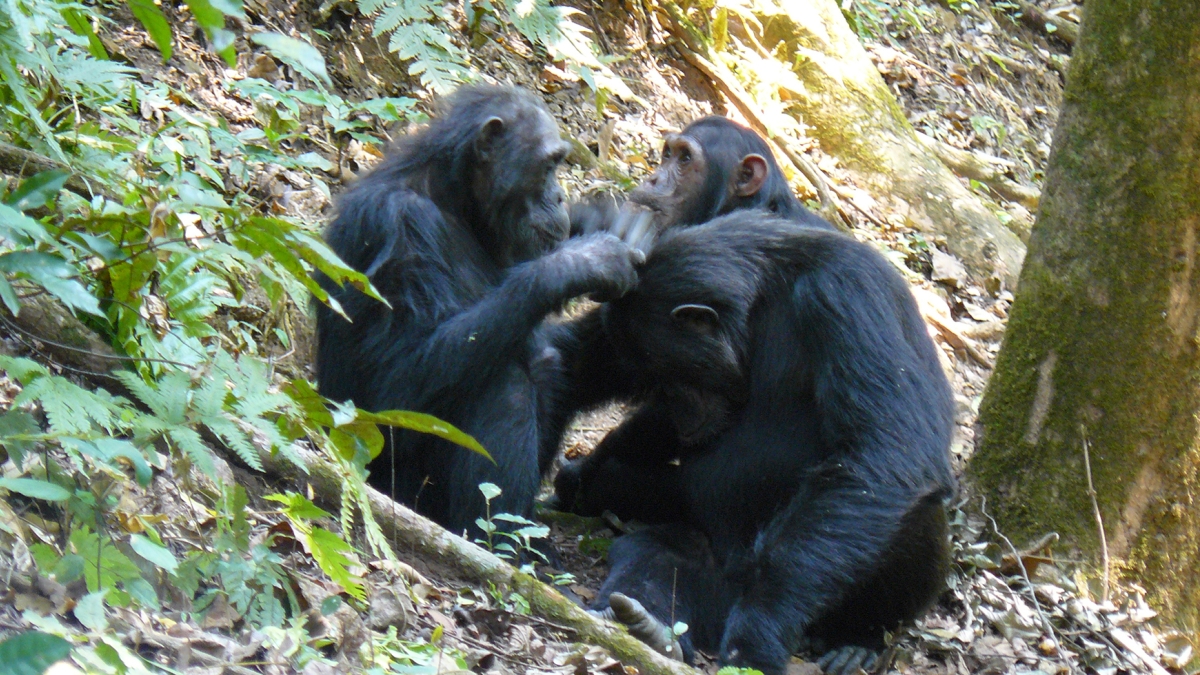A few good friends

Chimpanzees grooming each other. Image courtesy Samantha Russak.
Do humans form closer relationships as we age, understanding the inevitably of our own mortality? Socioemotional selectivity theory (SST) tries to explain this behavior in experimental findings from examples in mostly Western societies.
Writing in the journal Science this week, ASU Regents Professor Joan Silk brings her years of research on social behavior in primates to bear in "The upside of aging," a commentary on a paper by Rosati et al. The paper is testing if this pattern of forming close friendships as aging occurs extends to other primates who do not understand the concept of time or have the capacity to anticipate future events. The research examined age-related changes in relationship quality among male chimpanzees.
Silk’s most recent research has been in examining how female baboons form close relationships, and she has observed both baboons and chimpanzees in the wild. Silk is a research affiliate with the Institute of Human Origins and a professor with the School of Human Evolution and Social Change.
Because males remain in the communities in which they are born, long-term observations can be made of chimpanzees in these communities across their long lives together.

Joan Silk
Silk notes that the paper provides convincing evidence that male chimpanzees behave much like humans do as we age, and this pattern might exist in other primates as well.
Thus, she writes, “the patterns that SST was created to explain appear to generalize beyond our own species and might not depend on having a well-developed concept of time or conscious awareness of mortality.”
As rates of aggression decline with age, there are shifts in the males’ emotional reactivity. Essentially, the male chimpanzees mellow out, so their behavior doesn’t have to focus on dominance behaviors of earlier periods.
In the final analysis, Silk writes, “An evolutionary perspective can provide valuable insights into how natural selection shapes human social behavioral strategies as we grow old.”
More Science and technology

Turning up the light: Plants, semiconductors and fuel production
What can plants and semiconductors teach us about fuel production?ASU's Gary Moore hopes to find out.With the aim of learning how…

ASU technical innovation enables more reliable and less expensive electricity
Growing demand for electricity is pushing the energy sector to innovate faster and deploy more resources to keep the lights on…

What do a spacecraft, a skeleton and an asteroid have in common? This ASU professor
NASA’s Lucy spacecraft will probe an asteroid as it flys by it on Sunday — one with a connection to the mission name.The asteroid…

